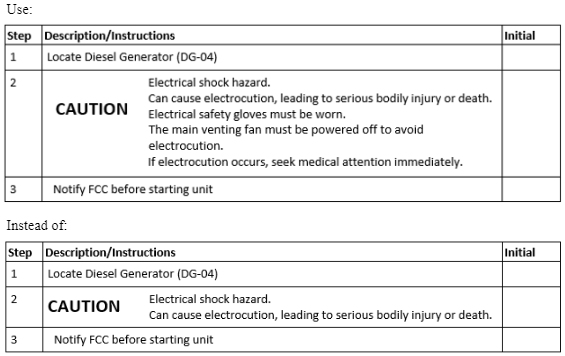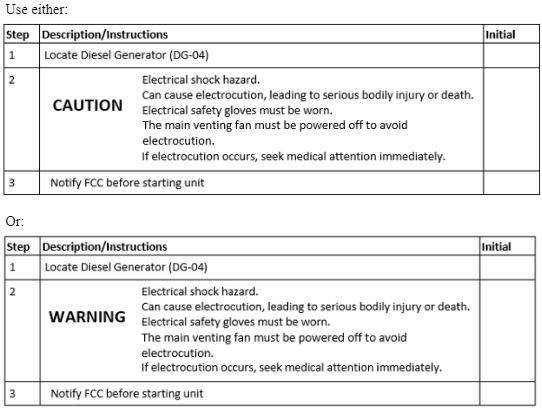Hazard Communication
For consumer products, people are more likely to adhere to the warning statements when the consequence of the hazard is included in the safety statement (Wogalter, 1999). However, this has not been verified for workers and procedures.
For consumer products, people are more likely to comply with the mitigation for the hazard if the mitigation action is provided with the hazard and the consequence (Wogalter, 1999). However, this has not be validated for procedure use.
Many regulatory and standards organizations require procedures to include information on the precautions necessary to prevent environmental, health, and safety (EH&S) hazards as well as the control of and response to adverse exposure (OSHA 1910.119(f)(1)(iii)(B,C); EPA 40 CFR § 68.69, 1999; API RP 75 § 5.2, 2004).
With this information, workers are:
- Able to prevent hazards or avoid exposure to them if possible
- Able to take the appropriate steps to control or eliminate hazards if they occur
- More likely to take proper precautions when needed (Trommelen, 1997)
Without this information, workers may:
- Be unable to respond to hazards properly or sufficiently ensure the safety of themselves, other employees in the area, equipment, product quality, and the environment
- Take more time to properly control a hazard, increasing the risks of injury and equipment damage (Trommelen, 1997)
Guideline 1: Hazard Information Conciseness
Support
Example

Guideline 2: Precautions Inclusion
Support
Example

Guideline 3: Use of Signal Words
Support
Example
